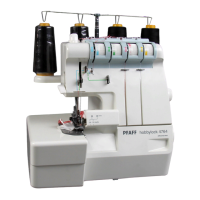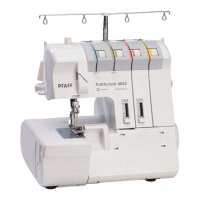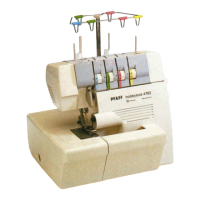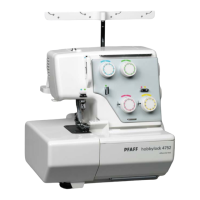15
Differential feed adjustment
The differential feed system consists of two sets of feed
teeth arranged one behind the other. Both feed teeth work
independently of each other to give perfect results when sewing
on speciality fabrics. When the amount of feed by the front feed
teeth is changed in relation to the feed by the rear feed teeth it
will “stretch” or “gather” the fabric.
Use the differential feed to prevent stretching of knit fabrics and
puckering of lightweight fabrics.
For overlock stitching on normal fabric, set the differential feed
adjusting lever to 1.0.
Gathered overlock (stretch, knit fabrics)
When overedging stretch fabric, such as knits and jersey,
adjust the differential feed to a number between 1.0 and 2.0.
The setting depends on the fabric being sewn. Test sew with
different settings before sewing on your project.
Stretch overlock (lightweight fabrics)
When overedging light woven or loosely knit fabrics, such as
silk and silky knitwear, adjust the differential feed to a number
between 0.7 and 1.0. When sewing, apply gentle tension to
the fabric by holding the seam lightly in front and back of the
presser foot. The setting depends on the material being sewn
as well as the wished amount of stretching. Therefore, test sew
with different settings before sewing on your garment.
Fabric Differential feed 1.0 Adjustment Result
Stretch fabric
(Knit, jersey)
1.0 - 2.0
Non-stretch fabric
(Chino, denim)
1.0
Lightweight fabric
(Silk, silky knitwear)
0.7 - 1.0
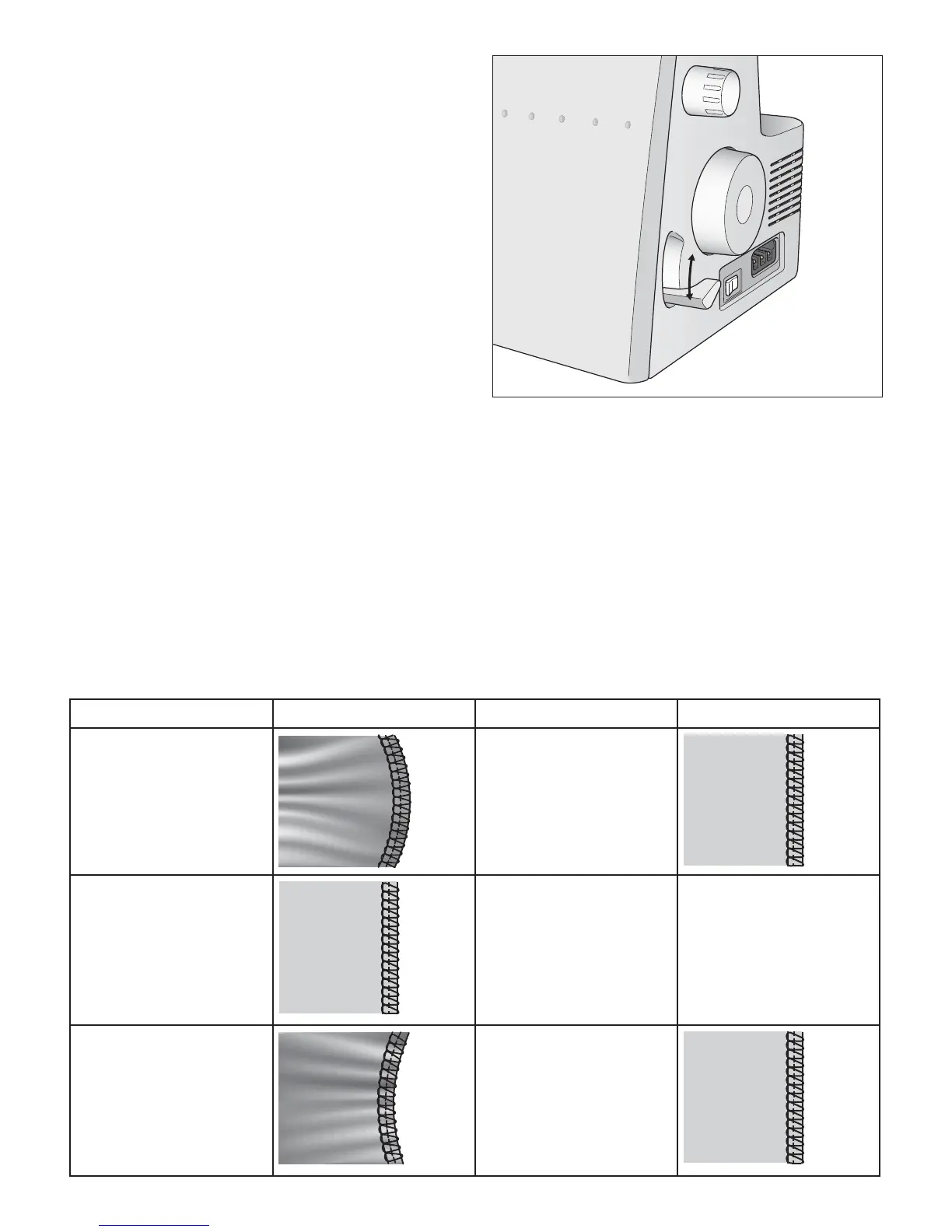